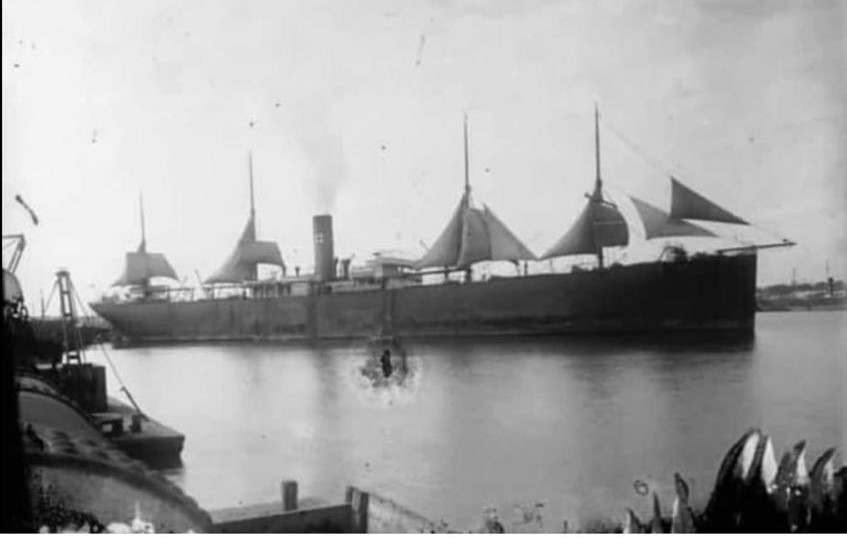
The Steamship NORFOLK: An Extraordinary Journey
On the 21st of June, 1906, the port of Fremantle witnessed a sight that became the talk of the town—a steamship, NORFOLK, arriving not under its intended power, but jury-rigged with makeshift sails. This was no ordinary sight, as the era of steamships had long since overtaken the age of sail, and vessels powered by steam were symbols of modernity and progress.
The NORFOLK, a sturdy steamship of British design, had departed from its last port with cargo and passengers bound for Australia. Somewhere along its voyage, disaster struck: the vessel’s engine failed, leaving it adrift on the open sea. For days, the crew wrestled with the predicament, aware that their steamship, which relied entirely on its engine, was helpless without propulsion.
The captain and crew, seasoned mariners with experience in both sail and steam, refused to surrender to the misfortune. Using every resource available, they improvised sails from canvas, tarpaulins, and even bed sheets. The rigging was cobbled together using spars, ropes, and whatever sturdy materials could be salvaged. This jury-rigged solution transformed the NORFOLK into a strange hybrid—a modern steamship temporarily converted into a sailing vessel.
With the improvised sails catching the wind, the ship inched its way across the Indian Ocean. The journey was slow and fraught with challenges. Steering a steamship designed for precision propulsion was no easy feat with only makeshift sails. However, the crew’s determination, ingenuity, and teamwork triumphed over the adversity.
When the NORFOLK finally came into view of Fremantle, it was met with awe and curiosity. Residents, workers at the docks, and officials gathered to watch the extraordinary vessel make its way into the harbor. The spectacle of a steamship arriving under sail was a stark reminder of the resilience and adaptability of seafarers in the face of adversity.
The story of the NORFOLK‘s journey spread quickly, becoming a symbol of courage and innovation. It served as a testament to the maritime spirit, blending the traditions of the age of sail with the advancements of the steam era.
The ship was eventually repaired and returned to its full functionality, but the tale of its remarkable journey to Fremantle remained a part of maritime lore, celebrated in the annals of Australian shipping history.




